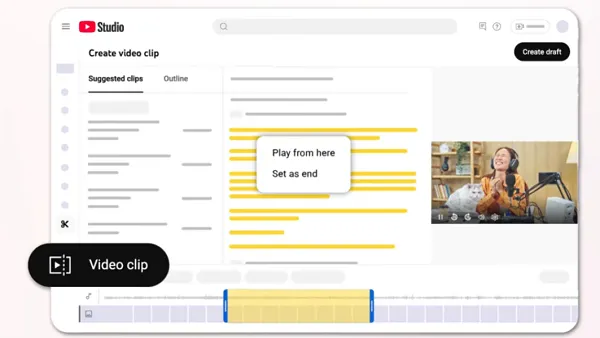When the Dot Com Disclosures were first released in 2000, social media as we know it was just starting to bud. It was not until 2004 that Facebook was launched, with Twitter following in 2006. The role that social media has taken in our lives, with 27% of online time spent on social networking sites[i], has caused advertisers to question how to monetize this outreach, and, in turn, is partly responsible for the updated ".com Disclosures: How to Make Effective Disclosures in the Digital Age"[ii] released this March. In part two of my three-part series on how companies can comply with the updated Dot Com Disclosures I will discuss the FTC's new guidelines in terms of social media advertising.
For those not familiar with the Dot Com Disclosures, it is a document released by the Federal Trade Commission regarding digital advertising, specifically pertaining to how to effectively disclose information and prevent deception. A general overview and history can be found in PART 1: Clear and Conspicuous Advertising in a Mobile World[iii].
So how do these new disclosures affect advertising on social media sites and how can companies comply with these rulings?
General Advertising Guidelines
The guidelines to disclosure in digital advertising incorporate the same rules used in other mediums of advertising. As with traditional advertising, social media posts must have the proper disclosures. For advertisements to be "clear and conspicuous", the general rule is that disclosures must:
- Not be misleading
- Substantiate all claims made
- Not be unfair
The 140 Character Limit and Other Constraints
Like print advertising, social media has its limits. Whereas print is limited by physical space, social media advertising uses characters to limit the amount of information which can be posted. While this might not be a problem for social sites like Facebook, which allows users to post up to 63,206 characters in a single update, micro blogging sites like Twitter have much smaller limits. At 140 characters per tweet, fitting a disclosure into a post is a heavy challenge.
While Facebook and blogs like Tumblr or Wordpress might seem like they have characters to spare, marketers still need to worry about truncation. A lengthy post might be able to fit all the disclosures in the world, but if they're hidden behind a "Read more", consumers are less likely to see them.
On Tumblr and other blogs, many people self-truncate. Some bloggers do it in order to show more posts on a single page or because scraper sites are taking a blogger's content and publishing it as their own. Bloggers posting original photos, particularly DIY bloggers, have also seen their photos go up on Pinterest linking back to blog reader websites instead of being attributed to their original site. Whatever the reason for truncation, it may cut off a disclaimer and thus look misleading to a consumer who's just scanning the highlights. The example below shows a truncated blog where the writer put the disclosure first, so as to keep the reader properly informed.

Truncation on Facebook automatically cuts out at about 400 characters[iv], including spaces and punctuation. That's a limited amount of characters for you to not only get your advertising across, but to also add in your disclosures before the consumer's eye skips to the next post on their News Feed.
In its Page Publishing Best Practices[v], Facebook explicitly states that concise posts are most effective. "Posts between 100 and 250 characters (less than 3 lines of text) see about 60% more likes, comments and shares than posts greater than 250 characters.

Posts paired with an image tend to be even more eye catching. However, putting a disclosure on an image may not be so easy with the 20% rule for text on images introduced by Facebook. Earlier this month blogs[vi] began reporting that the 20% rule had been lifted for brands' cover photos, but according to Erin Ledbetter of Ignite Social Media this might not be so[vii]. The "Text in Images"[viii] section in the Facebook Help Center clearly states that "images in your ads, sponsored stories and cover photo for your Page can include text that meets our general Advertising Guidelines, but may not include more than 20% text in the image." The limit applies to ads and sponsored stories that appear in the News Feed.
The grid tool, a 5x5 grid with a total of 25 boxes, allows marketers to see if their ad complies with the 20% rule. If the text fits in more than five of the boxes it is considered to be non-compliant. Pictures of products that include text on the product do not count against the amount of boxes used, as shown in the Red Bull example below.

Don't Hide Disclosures Behind Hyperlinks
Due to space restrictions or the desire to keep an online advert clean, an advertiser might resort to using hyperlinks to link to a disclosure on their website. Using a URL, however, would not be an adequate way to disclose information because of the slim likelihood of the consumer clicking through to the website to read the disclosure. The use of a link shortener, such as bit.ly or tinyurl, may confuse the consumer and they may not realize where the ad is being linked to or what they will find at the website. For products available at brick and mortar locations or through third-party vendor, using a hyperlink doesn't cut it; the disclosure must be adjacent to the claim in order to avoid misleading the consumer.

Using Hashtags to Disclose
The use of hashtags is mostly confined to users of Twitter, but is now becoming more common in social media such as Instagram and now Facebook. In the example below the hashtag "#Spon" would not be an acceptable disclosure because the consumer may not readily know what the hashtag is attempting to convey. If a portion of "reasonable users" is able to understand what the hashtag pertains to, it could be a valid way to disclose a sponsored message. Generally, however, hashtags are not seen as the best way to make an effective disclosure.
 The example below includes the hashtag "#client" denoting that the person posting works in connection with Tide.
The example below includes the hashtag "#client" denoting that the person posting works in connection with Tide.

Timelines Separate Disclosures

While many may think that posting multiple tweets or posts to their timeline might be the perfect way around Twitter and other sites' character limits, the Dot Com Disclosures deem it an ineffective way of informing the consumer. Consumers are less likely to see the disclaimer, the disclaiming post could get lost in their own timeline, or they may not even realize that the disclosure pertains to the previous post.
Endorsements and Testimonials
One issue not addressed in the Dot Com Disclosures is the trend of companies paying writers for good reviews and comments. In January 2012, The New York Times published an article calling out VIP Deals, a seller on Amazon, for their refunds-for-reviews policy[ix]. Most sites already have statements disallowing this kind of transaction, but, unless the site's administrators have some way of checking, it's hard to tell which businesses are doing it.
The FTC released a separate document in 2009 entitled "Guides Concerning the Use of Endorsements and Testimonials in Advertising"[x] which lays out the dos and don'ts of endorsements, including those for social media. Bloggers looking to monetize their writings should take particular care. The document states that for all endorsements and testimonials where the reviewer has received money, a free sample of the product, or services for the review, the nature of the relationship should be stated to the viewer. These reviews must also be the opinions of the writer. If a blogger wrote a favorable review of a product they didn't like this would be considered misleading and the writer could be fined as a result. Other misleading occurrences which could result in a fine include writing a review of a product or service the reviewer has not tried or making an unsubstantiated claim about the product or service.

On sites that do allow sponsored reviews, often times the sponsorship is only denoted with a symbol or icon which may be meaningless to the consumer. Icons, abbreviations, & symbols are generally not accepted according to the Dot Com Disclosures because they usually do not provide information about "why a claim is qualified or about the nature of the disclosure". Embedding the icon, abbreviation, or symbol with a hyperlink also would not be acceptable as the existence of a disclaimer would be unclear. The sample below includes the abbreviation "FS", shorthand for "free sample" which most users are unlikely to know. To avoid misleading users, "free sample" should be spelled out completely and placed under the customer's name.
Disclosing is Possible
While the challenge of fitting all the relevant information, along with the disclosure, into a post may be daunting, it is possible and is pertinent to keep the consumer well informed. The example below displays how to make an effective disclosure, all within 124 characters. The insertion of "Ad" at the beginning of the tweet discloses that the post is sponsored. The tweet also discloses the "Typical loss" at the end, instead of misleading the consumer by allowing them to think they will lose the 5 lbs. per week that "JuliStarz" lost.

Only four years after the Dot Com Disclosures were originally released, the document already needed to adapt. With companies paying widely followed Instagrammers to shoot their product and venues[xi] and the marketing potential of Vine and video on Instagram, what is the next technology or social media that will cause the disclosures to be revamped?









